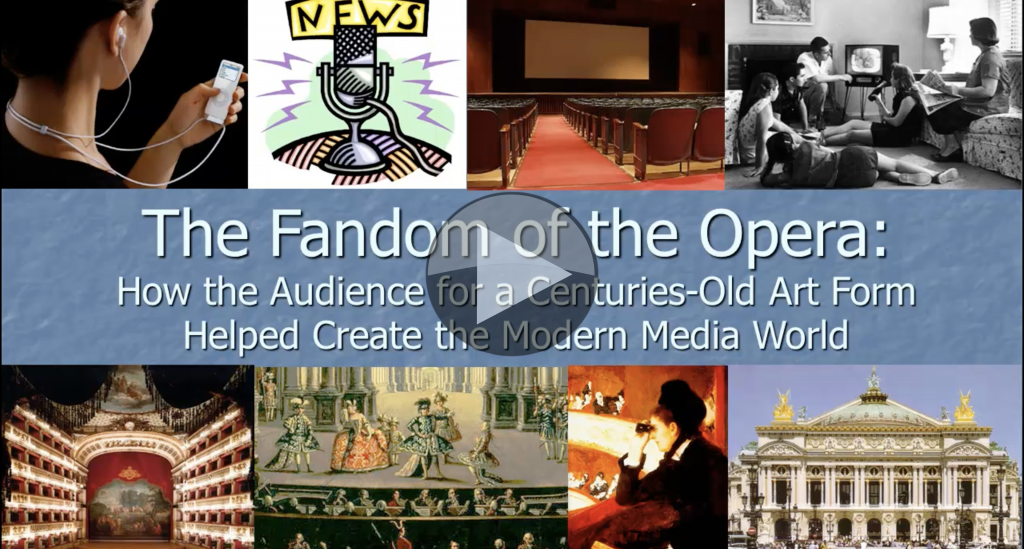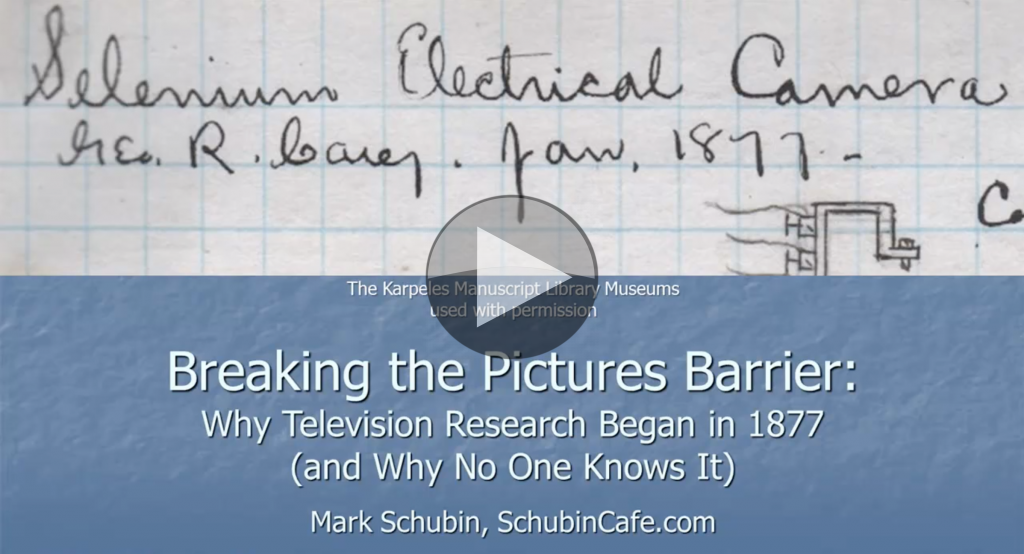A lecture by Mark Schubin on how a 400-year-old art form helped create modern media technology.
Believe it or not, electronic home entertainment was invented for opera audiences. So were consumer headphones, movies, newscasts, and pay-cable. The first sportscasts were in opera houses.
The first wireless broadcast? The first commercial digital recording? The first live subtitles? All opera.
The idea of transmitting opera motion pictures and sounds live to theaters worldwide appeared in print in 1877, to homes in 1882. Without opera, there might not be communications satellites. And, according to pioneering radiologist Percy Brown, “No opera, no X-rays!” The first opera recordings were made 17 years before Edison’s first phonograph, and 76 years before that an automaton played opera music for Marie Antoinette. In the 21st century, labs around the world are working on ultra-high-speed communications systems for opera and have discussed neutrino communications and quantum entanglement. Galileo, Kepler, Lavoisier, Matisse – all had opera-technology connections. Stereo sound? The laryngoscope? Broadcast rights? All for opera. Really. Watch and be amazed.



